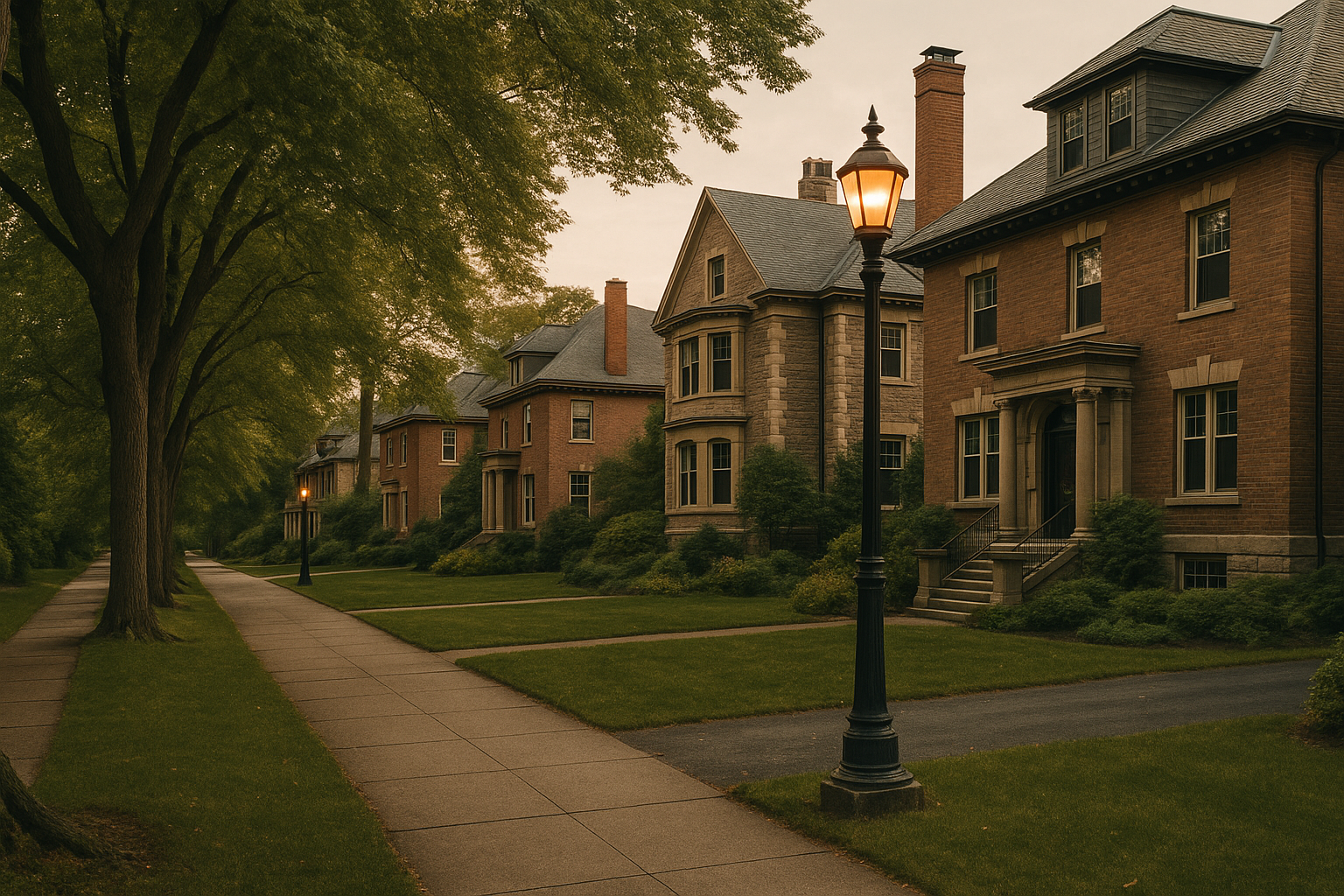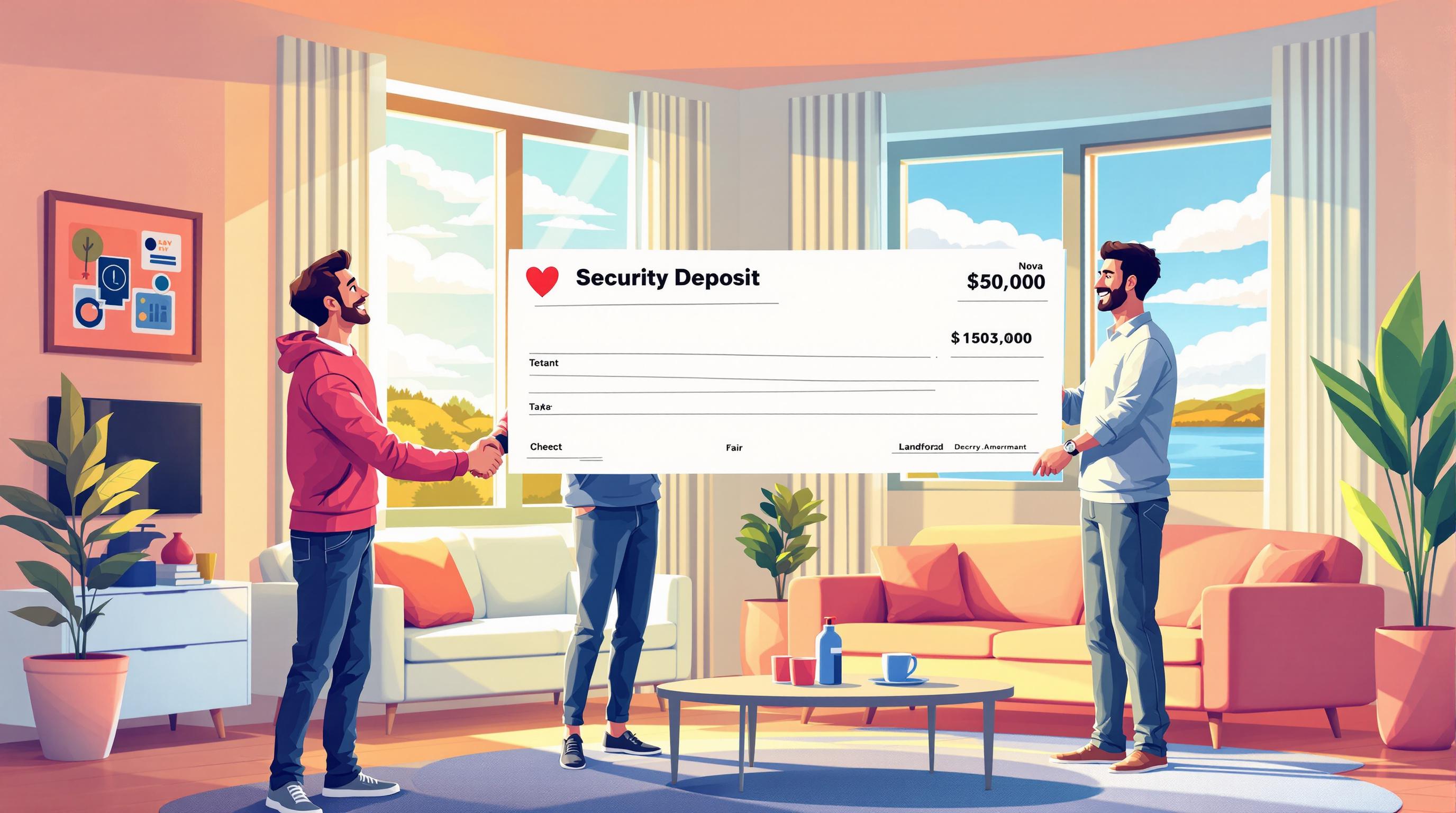Hybrid energy systems are transforming multi-unit rental properties in Nova Scotia by reducing costs, improving reliability, and attracting eco-conscious tenants. Here's what you need to know:
- Lower Costs: Save 10% to 60% on energy bills and increase property value by up to 25%. Federal tax credits and local rebates make upgrades affordable.
- Reliable Power: Backup systems ensure uninterrupted energy during outages, protecting tenants and property operations.
- Regulatory Compliance: Meet Nova Scotia’s stricter energy standards with rebates covering up to 80% of upgrade costs.
- Scalable Systems: Start small and expand as needed with modular components like solar panels and batteries.
- Tenant Appeal: Attract quality tenants with lower utility bills, sustainable features, and premium living conditions.
Hybrid systems combine renewable sources like solar with traditional energy to deliver consistent performance. For Nova Scotia property owners, this is a practical way to cut costs, meet regulations, and stay competitive in a growing market.
The Unexpected Genius of Apartment Solar
1. Lower Energy Costs and Better Returns
Hybrid energy systems, combining solar panels, energy storage, and traditional generators, can significantly reduce energy bills - by as much as 10% to 60% [5]. Thanks to automated controls, these systems consistently select the most cost-effective energy source [3], ensuring optimal efficiency and tangible financial benefits.
For property owners, the financial perks go beyond energy savings. Homes equipped with solar panels can see market values rise by up to 25%, along with the potential for premium rental rates [9][8]. Additionally, owning your energy generation opens up new revenue opportunities. For example, multifamily property owners can earn an average of $500 to $1,200 in additional net operating income per unit each year by selling solar power directly to their residents [6].
The federal Investment Tax Credit (ITC) also sweetens the deal, offering a 30% credit on solar installations until 2033 [6].
Another advantage of hybrid systems is price stability in a time of fluctuating energy costs. By generating a portion of your own electricity at fixed costs, you’re shielded from unpredictable utility rate hikes [3]. This stability simplifies financial planning and protects your investment returns from market volatility.
These savings and financial advantages also make properties more appealing to tenants. With 75% of adults willing to pay extra for sustainable products [6], eco-friendly buildings tend to have lower vacancy rates and attract high-quality tenants. In fact, properties with solar installations often list 56% above the average home price [10]. This growing demand for sustainable living spaces further enhances the value of investing in green technologies [9].
"Electrification not only reduces the emission of greenhouse gasses but can also save your tenants money on their utility bills. The increased marketability of electrified properties also allows you to charge higher rents." – Tim Moegen [7]
2. Backup Power and System Reliability
When the power grid goes down, hybrid systems that combine multiple energy sources with battery storage step in to keep the lights on and essential systems running [12]. Between 2000 and 2021, weather-related events were responsible for at least 83% of major power outages, highlighting the importance of having reliable backup power for property owners [11]. These systems automatically switch between energy sources, enhancing overall resilience.
For example, hybrid systems can seamlessly transition from solar power to battery storage during disruptions like heavy snow or overcast skies. This ensures tenants don’t have to endure prolonged outages. A real-world example is the 2017 Winter Storm Stella, when Block Island Wind Farm's turbines briefly paused but resumed automatically as conditions improved, maintaining a steady output of 30 MW [11].
After Hurricane Maria devastated Puerto Rico in 2017, the town of Adjuntas responded by installing a solar-powered microgrid with battery storage. This system allowed 14 businesses to continue operating for up to 10 days during outages, demonstrating the practical benefits of hybrid energy solutions [11].
Hybrid systems also reduce reliance on vulnerable supply chains. Unlike traditional power sources, wind and solar energy don’t depend on fuel deliveries, allowing them to operate uninterrupted even when transportation networks are compromised [11]. By generating and storing electricity locally, properties can function as independent microgrids during widespread grid failures.
Additionally, battery storage plays a crucial role by capturing excess energy during peak production times. This ensures continuous heating, cooling, and lighting, regardless of external conditions [11]. Beyond operational reliability, this level of preparedness boosts tenant satisfaction. Smart panels embedded in these systems can even detect and address potential issues before they escalate, providing an added layer of convenience and peace of mind [13].
3. Meeting Environmental Standards and Regulations
Nova Scotia has introduced strict energy efficiency standards, making hybrid energy systems a key component for reducing emissions and staying compliant. Buildings, when factoring in electricity-related emissions, are responsible for 18% of Canada's total emissions, highlighting the importance of energy-efficient solutions[1].
To support these efforts, the province offers generous financial incentives. For instance, the Affordable Multifamily Housing Program provides rebates of up to 80% for energy-efficient upgrades in rental properties. A project in Dartmouth benefited from this program, achieving significant annual savings alongside the rebate[2].
Starting April 1, 2025, Nova Scotia will implement the 2020 National Building Codes, which focus on higher energy efficiency standards for new buildings. Property owners planning multi-unit developments can also tap into the Affordable Rental Construction (ARC) pilot program, which provides financial incentives for constructing net-zero or net-zero–ready affordable housing[14].
Hybrid energy systems not only reduce costs and improve reliability but also tackle emissions head-on. Space and water heating, primarily powered by fossil fuels, account for over 96% of direct operational building emissions[1]. By integrating renewable energy sources with efficient heat pumps and battery storage, hybrid systems dramatically reduce reliance on natural gas and oil heating.
A compelling example comes from Winnipeg's Gordon Bell High School, where a comprehensive retrofit led to a 51% reduction in energy use, including a 71% cut in natural gas consumption[1].
"These new programs will support the building sector to help ensure even more Nova Scotians have access to affordable, energy-efficient homes. We recognize how important it is to help even more Nova Scotia residents keep money in their pockets at a time when it is needed most, while helping move the province closer to its climate change goals."
- Stephen MacDonald, President and CEO, EfficiencyOne[14]
Nova Scotians can also participate in demand response programs like Eco Shift, which help manage peak energy demand. Efficiency Nova Scotia and Nova Scotia Power aim to achieve 17.9 MW of demand response capacity during their 2023–2025 program cycle - enough to power about 2,500 electric vehicles[15].
With $21.9 million in provincial investments for energy efficiency, clear funding opportunities are available to meet these new standards[14]. By installing hybrid energy systems now, property owners can not only prepare for future regulations but also benefit from immediate financial incentives through rebate programs.
sbb-itb-16b8a48
4. Easy Expansion and System Modifications
Hybrid energy systems shine when it comes to flexibility. Thanks to their modular design, property owners can start small - perhaps with a basic solar panel and battery setup for a fourplex - and gradually expand. Need more power? Add extra panels, increase storage capacity, or even integrate wind turbines as your needs grow. The beauty of this setup is that each new component connects seamlessly to the existing system without disrupting what’s already in place. This approach not only keeps upfront costs manageable but also makes it easier to upgrade as your property portfolio expands.
At the heart of these systems are smart electrical panels. Acting as the control centre, these panels link all electrical devices, making it possible for tenants to manage operations and track energy use through smartphone apps. Adding new rental units or devices? No problem. The smart panel can handle additional circuits and devices without requiring a complete overhaul of the electrical system.
Planning for the future is key. Advanced technologies like machine learning-based predictive maintenance can cut operational costs by up to 20%, while bifacial and tracking solar systems can increase energy output by as much as 30% compared to traditional fixed-tilt systems [16]. The best part? These upgrades can be integrated into your existing hybrid setup without having to start from scratch.
Now, compare this to traditional energy systems. When capacity needs change, conventional systems often require a full replacement - a costly and wasteful process. Hybrid systems, on the other hand, grow with you. Each component you invest in continues to add value, ensuring your system evolves rather than becomes obsolete.
Beyond modularity, advanced storage solutions and cutting-edge digital tools make these systems even more adaptable. Hybrid storage options, such as batteries and hydrogen systems, provide greater flexibility [17]. Meanwhile, technologies like digital twins and IoT (Internet of Things) enable real-time performance optimization, ensuring smooth capacity expansion as your property’s demands change.
For property owners in Nova Scotia, this flexibility aligns perfectly with the province’s shifting energy goals. With ambitious renewable energy targets - such as the European Union’s aim for 42.5% renewable energy by 2030 [16] - expandable hybrid systems offer a forward-thinking solution. They’re built to adapt to evolving regulations and incentive programs, much like the reliable, fixed-price construction methods that ensure multi-unit developments remain efficient and valuable over time.
5. Higher Tenant Satisfaction and Occupancy
Hybrid energy systems are becoming a magnet for quality tenants. In fact, over 55% of renters actively look for properties with sustainable features [10]. By incorporating renewable energy upgrades, properties stand out in today’s competitive rental market, aligning with tenants’ growing focus on environmental values.
One major draw for tenants is lower utility bills. Reduced energy costs not only make tenants happier but also encourage lease renewals. This creates a win-win situation: tenants save money, and property owners enjoy higher occupancy rates and more stable rental income. Plus, with fewer tenant turnovers, owners can save on the costs and effort associated with finding new renters.
Marketing these green features can further enhance tenant appeal. Highlighting energy-efficient systems attracts eco-conscious renters, particularly Millennials and Gen Z, who prioritize sustainable living [20]. Properties with energy-efficient upgrades often experience higher demand and reduced vacancy rates [18].
But it’s not just about the financial perks. Hybrid energy systems elevate the overall tenant experience. Features like reliable backup power, consistent energy supply, and the peace of mind that comes with living in an environmentally responsible home contribute to tenant comfort and satisfaction. These benefits also help establish the property as a leader in sustainability, fostering a community of like-minded, eco-conscious residents [4].
For new developments, integrating hybrid systems from the outset offers even greater advantages. By planning for these systems during the construction phase - such as the approach taken by Helio Urban Development - developers can avoid the expense and hassle of retrofits. This forward-thinking approach ensures seamless integration and keeps costs in check, aligning with the broader goal of efficient and sustainable development.
Integrated Construction Approach for Reliable Delivery
Building hybrid energy systems in multi-unit rentals using traditional methods often leads to a logistical headache. Property owners typically juggle contracts with a range of professionals - planners, architects, engineers, electricians, and general contractors - who all work independently. This fragmented approach makes it difficult to coordinate the precise integration required for complex systems like electrical, HVAC, and renewable energy components.
The integrated construction approach simplifies this process by consolidating all the expertise under one roof. This streamlined method not only reduces the hassle but also ensures cost-effective and dependable installations that align with the hybrid energy benefits discussed earlier.
Fixed-price construction plays a key role in this approach. Unlike traditional cost-plus contracts, which often lead to unpredictable cost increases, integrated models lock in construction costs at $160,000 per unit. This eliminates the risk of budget overruns - historically ranging between 30–60% in fragmented projects - and gives property owners the confidence to calculate their return on investment accurately.
Timelines are another area where the integrated model shines. Energy-efficient projects frequently experience delays when multiple contractors struggle to coordinate their efforts. By contrast, the integrated approach slashes project durations from 12–18 months to just 6 months. With penalty clauses of up to $1,000 per day for delays, property owners can rest assured that their projects will stay on track. This means rental income - around $8,400 per month for a fourplex generating $2,100 per unit - can start flowing on schedule.
Specialized expertise in energy-efficient construction is crucial. Installing systems like heat pumps, smart thermostats, enhanced insulation, and renewable energy components requires more than general contracting knowledge. Multifamily properties alone have the potential to reduce residential energy use by 17% and save $3 billion in utility costs across the United States [19].
"We were able to justify the expense partly through the cash-on-cash return, as well as the increase in value we created in the property."
– Blaine Ott, Manager of an apartment complex in Appleton, Wisconsin [21]
Building these systems during construction is far more cost-effective than retrofitting later. For example, installing smart thermostats during the build phase can cut heating and cooling bills by about 8% annually [19]. Early integration also allows construction teams to optimize system placement, wiring, and overall design, which enhances efficiency and reduces future maintenance costs.
Quality control is another cornerstone of the integrated approach. Builders conduct multiple quality checks, including reviews by Professional Engineers and third-party inspections, to ensure the systems perform as designed. This attention to detail prevents the performance issues that often arise when installations fall short of design standards.
In Nova Scotia, companies like Helio Urban Development are setting the bar for systematic, energy-efficient construction. Serving all municipalities within a 90-minute radius of Halifax, they currently have 31 units under construction and 131 more in the planning phase. The demand is clear: fixed pricing, guaranteed timelines, and specialized expertise are removing the uncertainties that have traditionally discouraged property owners from investing in advanced energy systems.
Conclusion
Hybrid energy systems bring together a host of advantages, creating a solid foundation for rental properties that are ready for the future. They help cut costs, ensure reliable power, comply with environmental regulations, enable flexible upgrades, and improve tenant satisfaction - all of which can enhance returns for multi-unit rentals in Nova Scotia.
These benefits not only help retain tenants but also support higher rental incomes while taking advantage of available government incentives and rebates [22][23]. With their modular design, these systems ensure that today's investment remains relevant and valuable as technology continues to evolve [24].
"We were able to justify the expense partly through the cash-on-cash return, as well as the increase in value we created in the property."
– Blaine Ott, Manager of an apartment complex in Appleton, Wisconsin [21]
For property owners in Nova Scotia looking to adopt sustainable, cost-efficient, and resilient building solutions, an integrated construction approach simplifies the process. Companies like Helio Urban Development provide streamlined solutions that make investing in hybrid energy systems a confident choice.
FAQs
How do hybrid energy systems ensure reliable power in multi-unit rentals during extreme weather?
Hybrid energy systems play a key role in boosting power reliability for multi-unit rental properties. By integrating renewable energy sources like solar panels and wind turbines, these systems can balance energy production when weather conditions shift. On top of that, they include energy storage options, like batteries, to step in during power outages or times when energy generation dips.
These systems reduce dependency on the grid while providing steady power during extreme weather events, whether it’s a storm or a heatwave. This means fewer disruptions for tenants and a more consistent energy supply. Plus, they contribute to greener energy practices, making them a smart choice for sustainable rental properties.
What financial incentives or tax credits are available in Nova Scotia for property owners investing in hybrid energy systems?
Property owners in Nova Scotia have access to a variety of financial incentives designed to make investing in hybrid energy systems more appealing. On a federal level, the Clean Technology Investment Tax Credit offers a 30% rebate, while the Canada Greener Homes Initiative provides grants and financing options to support energy-efficient upgrades.
At the provincial level, there are even more opportunities, including rebates for solar panel installations and net-metering credits that reward energy storage systems.
These programs ease the financial burden of upfront costs and boost long-term savings, making hybrid energy systems a practical and cost-effective option for multi-unit rental properties.
How do hybrid energy systems help multi-unit rental properties meet Nova Scotia's environmental standards?
Hybrid energy systems are an essential part of helping multi-unit rental properties in Nova Scotia meet the province's environmental standards. By blending renewable energy sources such as solar, wind, and hydro, these systems cut down reliance on fossil fuels, reduce greenhouse gas emissions, and align with Nova Scotia's push for a cleaner energy future.
Incorporating renewable energy allows property owners to comply with regulations like Nova Scotia's 40% renewable electricity target while also supporting the province’s broader climate goals. Beyond environmental benefits, hybrid systems improve energy reliability and efficiency, offering a sustainable and cost-conscious solution for rental properties.



